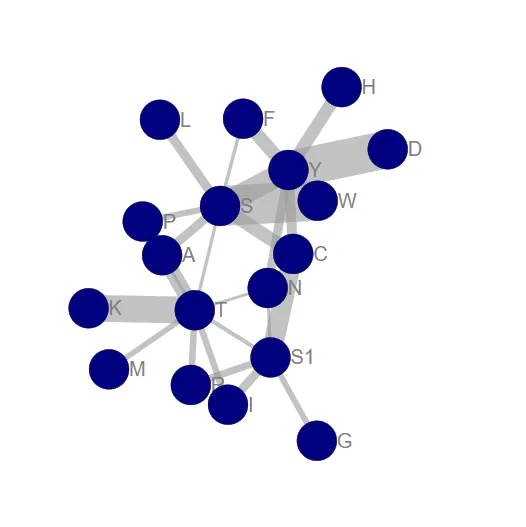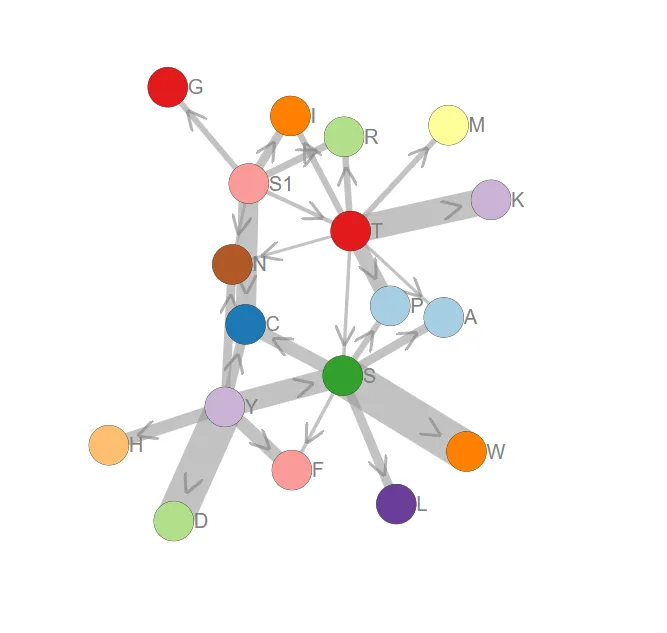我正在使用Plotly的Python接口生成网络。我已经成功创建了一个具有所需节点和边的网络,并控制了节点的大小。
我急切地寻求以下帮助:
- 添加节点标签
- 根据权重列表添加边标签
- 根据权重列表控制边线宽度
import pandas as pd
import plotly.plotly as py
from plotly.graph_objs import *
import networkx as nx
matrix = pd.read_csv("matrix.csv", sep = "\t", index_col = 0, header = 0)
G = nx.DiGraph()
# add nodes:
G.add_nodes_from(matrix.columns)
# add edges:
edge_lst = [(i,j, matrix.loc[i,j])
for i in matrix.index
for j in matrix.columns
if matrix.loc[i,j] != 0]
G.add_weighted_edges_from(edge_lst)
# create node trace:
node_trace = Scatter(x = [], y = [], text = [], mode = 'markers',
marker = Marker(
showscale = True,
colorscale = 'YIGnBu',
reversescale = True,
color = [],
size = [],
colorbar = dict(
thickness = 15,
title = 'Node Connections',
xanchor = 'left',
titleside = 'right'),
line = dict(width = 2)))
# set node positions
pos = nx.spring_layout(G)
for node in G.nodes():
G.node[node]['pos']= pos[node]
for node in G.nodes():
x, y = G.node[node]['pos']
node_trace['x'].append(x)
node_trace['y'].append(y)
# create edge trace:
edge_trace = Scatter(x = [], y = [], text = [],
line = Line(width = [], color = '#888'),
mode = 'lines')
for edge in G.edges():
x0, y0 = G.node[edge[0]]['pos']
x1, y1 = G.node[edge[1]]['pos']
edge_trace['x'] += [x0, x1, None]
edge_trace['y'] += [y0, y1, None]
edge_trace['text'] += str(matrix.loc[edge[0], edge[1]])[:5]
# size nodes by degree
deg_dict = {deg[0]:int(deg[1]) for deg in list(G.degree())}
for node, degree in enumerate(deg_dict):
node_trace['marker']['size'].append(deg_dict[degree] + 20)
fig = Figure(data = Data([edge_trace, node_trace]),
layout = Layout(
title = '<br>AA Substitution Rates',
titlefont = dict(size = 16),
showlegend = True,
margin = dict(b = 20, l = 5, r = 5, t = 40),
annotations = [dict(
text = "sub title text",
showarrow = False,
xref = "paper", yref = "paper",
x = 0.005, y = -0.002)],
xaxis = XAxis(showgrid = False,
zeroline = False,
showticklabels = False),
yaxis = YAxis(showgrid = False,
zeroline = False,
showticklabels = False)))
py.plot(fig, filename = 'networkx')

